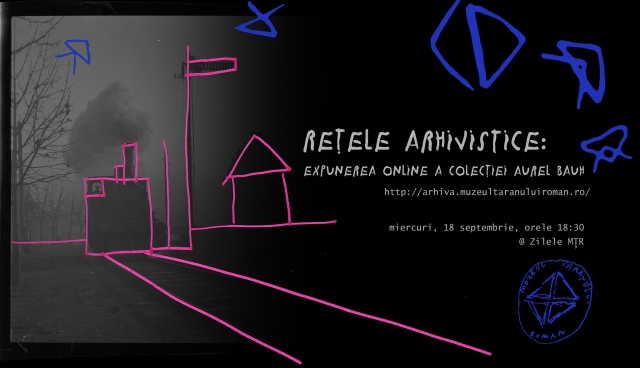A first meeting devoted to the initiative of
the Romanian Peasant Museum’s Image Archive to display online its collections,
managed to explain the concept lying at the foundation of a platform entitled
‘Networks of the Eye Gaze’ focusing on the photographs signed by Aurel Bauh.
Here is at the microphone Viviana Iacob, researcher and curator with the
aforementioned platform.
Viviana
Iacob: In case of the Bauh collection, we have identified several series
bearing names like Valeni, Dambovnic, Gurghiu, Valea Jiului. There is also a
series of industrial photos devoted to Bucharest. Such series can either grow
or diminish following research or external contributions. Anyway, the
structure of the online platform has been conceived so as to support such
content fluctuations.
Of course such archive content is supported
through verified information, specialists refer to as metadata. Research
conducted on several sources was necessary before launching the Bauh collection
on the online platform.
Viviana
Iacob:This
set of metadata is also important for creating relevant connections with
artifacts from the same collection and also from the other collections of the
archive. Research has been conducted to unearth further information that can be
added to metadata. So the history of these negatives has been studied in order
to find out when they were shot and published. Several sources were studied simultaneously,
such as the photographer’s biography, exhibition brochures and other materials
about Bauh’s exhibition projects, newspaper and magazine articles of that time
as well as academic articles on ethnographic research conducted in the period
between the two World Wars etc.
Born in Craiova, southern Romania, in 1900,
Aurel Bauh left for Paris in early 1920s, where he got involved with the
Avant-garde movement. His story continued in Bucharest, where he opened his own
workshop a decade later. His collection, part of the Peasant Museum’s heritage,
mainly depicts scenes of rural life.
Viviana
Iacob: Bauh opened Studio 43 in Bucharest in 1937 and staged his first
personal exhibition a year later. Starting 1939 he participated in the exhibitions
mounted by the National Travel Office ONT. He published two photos in the ONT
magazine, one entitled ‘Winter Fantasy and the other ‘Crops. With the latter
he reaped the fifth ONT exhibition.
Apart from that, however, Bauh also worked on
a project dedicated to Jiu River valley, beginning 1945. In the fall of 1946,
Bauh inaugurated his second sole exhibition, and in 1947, the photographs he’ d
taken in Jiu River Valley went with Geo Bogza’s essay, ‘People and coal.’
But what is the way an archive storage
drawer image takes, until it is stored in the digital collection? How is a
digital collection built, and what are the challenges of such a journey?
Viviana
Iacob: The timeline of the
collection as shown in the Bauh biography narrows down according to series, and
it narrows down even more according to the amount of research in the case of
such series, through the literature focusing on sociological campaigns, through
publication, through the moments he displayed certain artifacts. These
occurrences are extremes for the entire archives, specifically as regards the
amount of research or research effort made, in order to discover a title or a
timeline, or in order to place an artifact in context and even to connect it to
other artifacts, belonging to other collections.
‘Networks of the Eye Gaze is a digital
platform where those who are interested can find the artifacts signed by Aurel
Bauh. Also, participants may intervene so that the collection may be enriched
and additional information on the collection may be provided. Here is the chief of National Peasant
Museum’s ethnological archives bureau, Iris Serban.
Iris Serban: This is how we have sought to
promote the museum’s ethnological archives, creating a character which is
accessible for the lay public, a real character ,born out of the way the
archives have been created, and who lived in the previous century. The project
is still in its infancy. ‘The Networks of the Eye Gaze’ project is much more
than a database, it is a virtual space where the visitors is invited to
discover the archives stuff, photographs, audio and video excerpts and texts,
on one hand, while on the other hand, the visitor is invited to make his own
contribution to all that.
The Romanian Peasant Museum this summer
launched the first interactive digital platform dedicated to a Romanian museum
archives. The Aurel Bauh photo collection can be accessed through the ‘Networks
of the Eye Gaze platform.
‘Networks of the Eye Gaze’ is a National Peasant
Museum project, which received the joint support of RIZI Design, Samsung
Romania, Gemini Solutions and The Plot. The project’s international partner is
Romania’s National Museums Network. ‘Networks of the Eye Gaze’ can be accessed
at arhiva.muzeultaranuluiroman.ro
